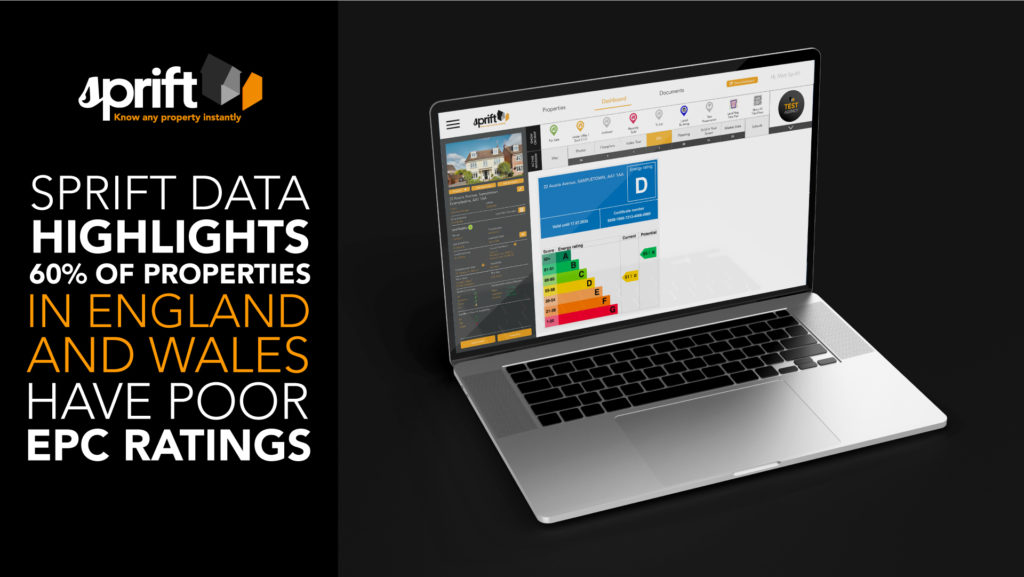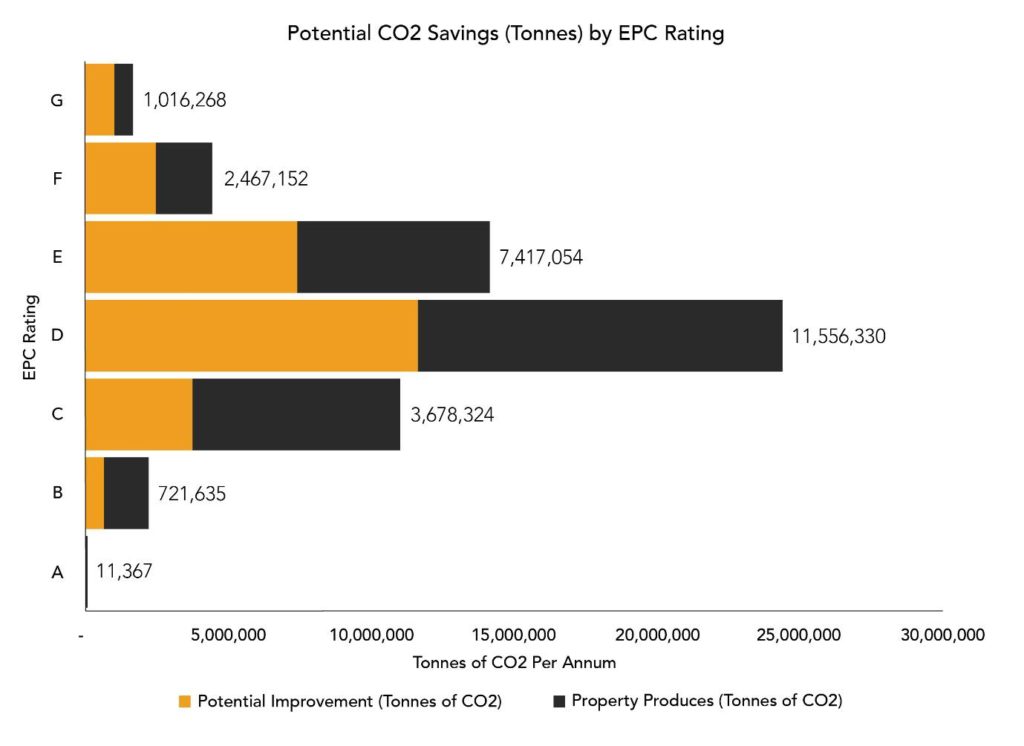
Almost two thirds of homes in England and Wales have poor EPC ratings
-Sprift data highlights that 60 per cent of properties have the lower energy-efficiency grades D to G -Improvements to these properties could more than halve their CO2 emissions
With the climate crisis high on the news agenda and recent research highlighting that homes with higher energy ratings are worth morei, property data specialist Sprift has analysed the last decade of EPC data on its platform and uncovered that almost two thirds of properties (60 per cent) in England and Wales have the lower ratings of D to G when it comes to energy efficiency*.
The data confirms that 41 per cent of properties have the average EPC rating of D, and that only 29,293 homes in England and Wales received an A rating, which equates to 0.2 per cent.
Further analysis has identified that this tranche of lower EPC rated properties produce a whopping 77 per cent of all CO2 emissions from homes in England and Wales. However, potential improvements made to these properties, could more than halve (51 per cent) their emissions.
When it comes to making improvements to D to G-rated properties, the following four installation recommendations are made most often:
- Solar photovoltaic panels 2.5 kWp
- Solar water heating
- Floor insulation
- Low energy lighting2
Matt Gilpin, CEO of Sprift, said: “These figures around how many properties fall into the lower EPC ratings categories, and the amount of CO2 emissions they produce are alarming, particularly against the backdrop of the COP 26 Summit, and target of net zero emissions by 2050.
“When it comes to improving their EPC ratings, homeowners can really play their part, but we must not forget that for many, paying for improvements will be both unaffordable and unachievable. Following the failure of the green homes grant, the government must look at how it can provide funding to assist with upgrades in order to meet net zero emission targets.
“Interestingly, if some of the A-rated homes go on to make even further improvements then this category of property would be – potentially – carbon neutral (excluding build CO2)!”

1* this figure only takes into account those properties with an EPC rating Energy Crisis: Better EPCs boost house values – claim… (estateagenttoday.co.uk)
2 Potential savings switching traditional or Halogen bulbs to LED: Guide to energy efficient lighting – Energy Saving Trust
